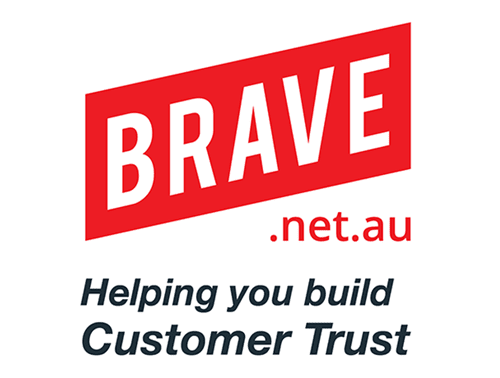In the contemporary digital landscape, a well-functioning website is essential for attracting and retaining visitors. Common issues such as broken links, slow loading speeds, and security vulnerabilities can significantly affect user experience and search engine rankings.
We cover the importance of regularly monitoring for website issues, identify the most prevalent problems, and offer practical steps to detect and resolve these issues effectively. It is imperative to stay proactive in order to ensure optimal website performance.
Why Is It Important to Check for Website Issues?
.jpg_00.jpeg)
Conducting regular checks for website issues is a vital component of maintaining an effective online presence, as it significantly affects user experience, search engine rankings, and overall website performance.
A comprehensive site audit or SEO audit enables website owners to identify and rectify various problems, including crawl errors, broken links, and indexing issues, thereby ensuring the website operates smoothly and efficiently.
Additionally, regular monitoring of performance metrics and user engagement can reveal areas for improvement, helping to sustain a competitive advantage in the digital landscape.
What Are the Common Website Issues?
Common website issues can considerably impede a site’s performance and user engagement, ultimately impacting its search visibility and ranking. Such issues may encompass broken links that disrupt site navigation, slow loading speeds that lead to user frustration, and mobile usability challenges that hinder optimal viewing on various devices.
Furthermore, indexing problems, SSL certificate issues, and inferior content quality can adversely affect a website’s credibility and security. Therefore, it is imperative for webmasters to identify and address these challenges in a timely manner.
1. Broken Links
Broken links on a website can significantly impair the user experience, leading to increased bounce rates and potentially damaging the site’s SEO performance. These links may arise from outdated content, server configuration issues, or incorrect redirects, resulting in crawl errors that impede search engines from effectively indexing the site. Consequently, regular monitoring of the website is essential to promptly identify and rectify broken links.
To address this issue effectively, website administrators should employ tools such as Google Search Console, Ahrefs, or Screaming Frog, which are designed to scan for these detrimental links. Conducting regular audits can reveal not only broken links but also provide valuable insights into user navigation patterns.
Best practices for maintaining link integrity include:
- Establishing a routine check-up schedule
- Timely updating or redirecting broken links
- Ensuring a robust internal linking structure
Additionally, creating a user-friendly 404 error page with suggested links can improve user experience, even in the event of encountering a broken link, thereby helping to retain visitor engagement.
2. Slow Loading Speed
Slow loading speed constitutes a significant concern that can adversely impact user experience, elevate bounce rates, and diminish overall website engagement. Research indicates that users expect web pages to load within a matter of seconds; any delay can result in frustration and potential abandonment of the site.
To ensure optimal performance, it is essential to regularly monitor page speed and implement website optimisation strategies, such as image optimisation, leveraging browser caching, and utilising a content delivery network (CDN).
Along with enhancing user satisfaction, fast-loading pages exert a considerable influence on search engine rankings, as algorithms tend to favour websites that provide quick access to information. Consequently, web administrators should employ tools such as Google PageSpeed Insights, GTmetrix, and WebPageTest to accurately measure loading times and identify potential bottlenecks.
By adopting best practices, including minifying CSS and JavaScript, as well as reducing server response times, noticeable improvements can be achieved. Regularly reviewing performance metrics not only aids in maintaining speed but also facilitates ongoing optimisations, ensuring a positive user experience that encourages repeat visits while simultaneously enhancing the site’s visibility in search results.
3. Mobile Responsiveness
Mobile responsiveness is crucial in today’s digital landscape, as an increasing number of users access websites through mobile devices. A website that is not optimised for mobile can result in poor usability, frustrating users and negatively impacting engagement and conversion rates. Conducting regular cross-browser testing is essential to ensure that the site performs effectively across various devices and screen sizes, thereby contributing to overall technical SEO success.
Furthermore, search engines such as Google prioritise mobile-friendly websites, making responsiveness a critical factor in ranking within search results.
Best practices for achieving optimal mobile responsiveness include the use of flexible grids, scalable images, and CSS media queries to adapt the layout for different screen sizes.
Tools such as Google’s Mobile-Friendly Test and other usability testing platforms offer valuable insights into a site’s performance on mobile devices.
Embracing adaptive web design not only enhances user experience by ensuring seamless navigation but also improves loading times and reduces bounce rates, ultimately fostering higher conversion rates and enhancing client satisfaction.
4. Duplicate Content
Duplicate content poses a significant challenge in the field of SEO, as it can create confusion for search engines and result in indexing issues that reduce a website’s visibility. When multiple pages feature similar content, it may dilute page authority and adversely affect search engine rankings.
To address this concern, webmasters can implement canonical tags to indicate the preferred version of content, thereby ensuring that search engines accurately index the appropriate pages.
This approach consolidates ranking signals and directs traffic to the correct page, thereby enhancing its likelihood of prominence in search results. Identifying duplicate content necessitates a comprehensive audit of the website, which can be conducted using various tools designed to analyse URLs and detect similarities.
Furthermore, developing robust content strategies is crucial, as it encourages the creation of high-quality, unique content that engages users and fosters interaction. Maintaining originality is vital for preserving authority and credibility in the eyes of search engines, ultimately promoting improved traffic and user retention.
5. Security Vulnerabilities

Security vulnerabilities present a significant threat to the integrity of websites and the trust of users, making it imperative for webmasters to conduct regular assessments of their site’s security measures. Common issues include SSL deficiencies, outdated software, and potential breaches that could compromise sensitive user data. Transitioning to HTTPS not only enhances security but also conveys to users that their information is protected, thereby improving overall user engagement and trustworthiness.
The importance of proactive security practices cannot be overstated, as they are essential for establishing a loyal user base. By identifying vulnerabilities such as SQL injection, cross-site scripting, and inadequate password management, site owners can implement targeted strategies, including regular software updates, the use of firewalls, and the execution of security audits.
The deployment of SSL certificates is crucial, as it encrypts data transferred between users and websites, ensuring confidentiality. This level of protection is vital for creating an environment in which users feel secure, ultimately contributing to higher retention rates and sustained interactions.
How to Check for Website Issues?
Assessing a website for issues necessitates a combination of automated tools and manual inspections to ensure thorough coverage of all potential problems. The use of website audit tools can facilitate the process by efficiently identifying common issues such as broken links, crawl errors, and page speed concerns.
Meanwhile, manual checks are essential for uncovering less apparent problems that may affect user experience. Furthermore, it is vital to regularly monitor performance metrics and conduct security scans to maintain the overall health of the website.
1. Use Website Audit Tools
Website audit tools are essential for efficiently identifying and diagnosing a variety of website issues, thus facilitating a comprehensive SEO audit. These tools evaluate performance metrics, highlight security vulnerabilities, and identify areas for improvement in both on-page and off-page SEO strategies. By utilising these resources, website owners can effectively monitor their site’s health and make informed decisions to enhance overall user experience and search engine visibility.
The automation of the evaluation process provided by these tools significantly diminishes the time and effort required to identify issues that may impede a site’s performance. For example, tools such as SEMrush and Ahrefs deliver detailed insights into keyword rankings, backlink profiles, and site speed, while seamlessly integrating with analytics platforms like Google Analytics. This integration allows for continuous monitoring, enabling webmasters to receive real-time alerts regarding emerging issues.
Additionally, features such as mobile optimisation assessments and content recommendations enable users to refine their strategies effectively, ultimately leading to improved rankings and higher conversion rates.
2. Manually Check for Broken Links
Manually checking for broken links is an essential practice for maintaining a seamless user experience and ensuring the effectiveness of a site audit. While automated tools can identify many broken links, a manual review of content allows for the detection of less apparent issues, such as outdated references or links to third-party sites that may have changed or been removed. This proactive approach is critical for website monitoring and significantly enhances overall site usability.
To initiate the manual checking process, one should methodically navigate through each page, clicking on every hyperlink to confirm its functionality. Utilising tools such as Checklink or Broken Link Checker for initial scans can be beneficial; however, human oversight remains critical.
Maintaining a spreadsheet of broken links, along with their corresponding URLs and the dates of the last verification, facilitates systematic management. Establishing a routine schedule for these checks—potentially on a monthly or quarterly basis—ensures that any broken links are addressed in a timely manner.
This diligence not only cultivates trust with users but also positively influences search engine rankings by minimising the potential for high bounce rates.
3. Test Website Loading Speed
Testing website loading speed is crucial for assessing how quickly users can access content and the consequent impact on user experience. Numerous tools are available that provide valuable insights into page speed metrics, enabling webmasters to identify bottlenecks and areas requiring enhancement in website optimisation. By conducting regular assessments of loading speed, one can ensure a more efficient and satisfactory browsing experience for visitors.
Tools such as Google PageSpeed Insights, GTmetrix, and WebPageTest offer valuable performance metrics, including time to first byte, fully loaded time, and overall scores. Understanding these metrics is essential, as they reveal specific issues, such as large image files or excessive HTTP requests, that may impede performance.
Implementing the recommended changes can lead to significant improvements in load times and user satisfaction. For example, optimising images and utilising browser caching are straightforward yet effective strategies.
Regularly revisiting these tests not only ensures that a website operates smoothly but also enhances search engine rankings, thereby increasing traffic.
4. Check Mobile Responsiveness
Ensuring mobile responsiveness is essential for delivering a seamless experience across all devices and platforms. This process involves evaluating how content is displayed on various screen sizes and ensuring that navigation remains intuitive for mobile users. Utilising cross-browser testing tools can assist in identifying compatibility issues and ensuring that the website adheres to the technical SEO standards required for mobile optimisation.
To effectively assess mobile responsiveness, designers and developers should employ tools such as Google’s Mobile-Friendly Test and BrowserStack, which can simulate a range of devices and browsers. Additionally, conducting manual assessments on widely used devices is crucial for understanding real-world usability.
Best practices for ensuring mobile usability include:
- Optimising images to minimise load times
- Utilising legible fonts
- Maintaining a responsive layout that adapts seamlessly to different orientations
Regular analysis of user behaviour through analytics can provide valuable insights into potential drop-off points within the user journey, enabling proactive adjustments to enhance the overall mobile experience.
5. Use Plagiarism Checkers
.jpg_10.jpeg)
Utilising plagiarism checkers is an essential step in maintaining content quality and ensuring that a website does not experience issues related to duplicate content, which can adversely affect SEO efforts. These tools are instrumental in identifying instances of copied or similar content from other websites, enabling content managers to make necessary adjustments and uphold originality. This practice not only supports improved search engine rankings but also enhances user trust in the credibility of the website.
There are numerous plagiarism checkers available, each offering distinct features to facilitate this process, such as Grammarly, Copyscape, and Turnitin. These tools not only identify problematic sections but also provide suggestions for rephrasing or enhancing the material.
In the context of SEO, producing original content is not merely a best practice; it is crucial for engaging users and enhancing visibility. Strategies such as content brainstorming, leveraging personal experiences, and conducting thorough research can aid in the creation of unique and compelling articles that resonate with the audience, encouraging them to return for more.
6. Perform Security Scans
Conducting security scans is essential for identifying potential vulnerabilities that could compromise website security and user trust. Regular assessments of a website for weak points, outdated plugins, and SSL issues are imperative to ensure that sensitive user information remains protected. Implementing security best practices not only safeguards the website but also reinforces the trust users place in the platform, particularly when utilising HTTPS for secure communications.
Furthermore, beyond the risks associated with outdated software, it is vital to address common vulnerabilities such as SQL injections, cross-site scripting (XSS), and security misconfigurations that may jeopardise sensitive data.
Various tools, such as Nessus and OWASP ZAP, facilitate the scanning process by providing automated assessments that can uncover hidden threats. Regular scanning not only strengthens the website’s defences but also conveys to users that their data is a priority, ultimately fostering lasting relationships and encouraging repeat visits to the site.
This proactive approach to security emphasises a commitment to protecting user trust and maintaining the integrity of the website, thereby creating a safer online environment for all stakeholders involved.
What Are the Steps to Fix Website Issues?
Addressing website issues requires a systematic approach that begins with the identification of the problem and an analysis of its underlying causes, followed by the implementation of effective solutions. Each step in this process is essential for restoring optimal functionality and improving user experience.
By routinely monitoring website performance and user engagement, webmasters can proactively address potential issues, ensuring a seamless browsing environment for visitors.
1. Identify the Issue
Identifying the issue represents the first and most critical step in addressing website problems, as it establishes the foundation for all subsequent actions. This process necessitates a comprehensive website audit that evaluates performance metrics, user engagement data, and visitor feedback to accurately identify specific problems affecting the site. By utilising analytics tools and monitoring user behaviour, webmasters can acquire valuable insights into the issues that necessitate immediate attention.
Along with conventional analytics platforms such as Google Analytics, the application of heatmaps and A/B testing can offer a more profound understanding of user interactions on a website. Tools like Hotjar or Crazy Egg enable webmasters to visualise user engagement, including click and scroll behaviour, thereby revealing potential areas of confusion or frustration.
Collecting user feedback through surveys or feedback forms can illuminate issues that raw data may not adequately convey. This data-driven approach not only facilitates accurate problem diagnosis but also assists in prioritising necessary fixes based on their impact on user experience, ultimately resulting in a more effective and user-friendly website.
2. Determine the Cause
Once the issue has been identified, it is essential to determine the cause in order to implement effective solutions and prevent recurrence in the future. This process may involve investigating technical SEO factors, assessing content quality, or analysing user experience pathways to uncover the root of the problem. By understanding the underlying issues, webmasters can develop targeted strategies for remediation.
To thoroughly address these challenges, employing techniques such as technical analysis can provide clarity on how site elements affect performance, while user journey mapping reveals user interactions and pain points throughout their experience.
This comprehensive approach ensures that all potential causes are considered; overlooking even a single element could significantly impact the difference between temporary fixes and long-term success. A holistic view of the website integrates these elements to create a cohesive understanding of how various factors interact, thereby enableing website managers to optimise both functionality and user satisfaction effectively.
3. Implement Solutions
Implementing solutions entails taking targeted actions to address identified issues and optimise website performance. This process may involve updating content, repairing broken links, or enhancing security measures. Such modifications not only enhance user experience but also contribute to improved search engine rankings and overall site health. Continuous monitoring is essential to ensure that the implemented solutions are effective and that new issues do not emerge.
To effectively address various challenges, website owners can employ tools such as SEO audits, performance analyses, and security assessments to identify areas of concern. Adhering to best practices, such as regularly updating software and incorporating responsive design, plays a significant role in enhancing both functionality and aesthetics.
Utilising analytics platforms allows for the tracking of the impact of these changes, facilitating real-time adjustments. Additionally, A/B testing can yield valuable insights into user preferences, guiding further enhancements and ensuring that the website remains competitive within its niche. A proactive approach to optimisation fosters a dynamic and user-friendly online presence.
4. Monitor for Improvement
.jpg_11.jpeg)
Monitoring for improvement is a crucial and ongoing process that enables webmasters to evaluate the effectiveness of implemented solutions and make necessary adjustments. By consistently analysing website performance metrics and user engagement data, webmasters can track progress and identify any emerging issues that may impact user experience and traffic analysis. This proactive approach ensures that the website continually meets user needs and performs optimally in search engine rankings.
Utilising various analytics tools such as Google Analytics, SEMrush, and Ahrefs provides detailed insights into site health and performance. These tools facilitate the tracking of critical metrics, including page load speed, bounce rates, and conversion rates, which are essential for assessing the site’s ability to engage visitors effectively.
Additionally, heatmaps and session recordings can reveal user behaviour, illustrating where users click or how they navigate through the site. By interpreting these analytics, webmasters can make data-driven decisions aimed at enhancing user experience, ultimately driving higher engagement and fostering customer loyalty.
How Often Should You Check for Website Issues?
Determining the appropriate frequency for checking website issues is contingent upon several factors, including the complexity of the website, traffic levels, and the frequency of content updates. Regular website monitoring, ideally conducted on a monthly basis or following significant changes, is essential for promptly identifying and resolving potential issues. By closely monitoring performance metrics and conducting periodic site audits, webmasters can ensure an optimal user experience and maintain site functionality.
The nature of the website content significantly influences this frequency; websites with dynamic content, such as blogs or news platforms, typically necessitate more frequent checks compared to static sites.
It is advisable to implement monitoring tools that can automate alerts for downtime or slow performance, thus facilitating a more proactive approach to maintenance. Furthermore, regular backups and updates to content management systems are critical in mitigating risks associated with security vulnerabilities.
By adopting these strategies, webmasters can ensure that their sites remain functional and relevant in an ever-evolving digital landscape.
Frequently Asked Questions
How do you check if a website has issues?
To check if a website has issues, you can use various methods such as manual checks, website testing tools, or website monitoring services.
What are some common signs that a website has issues?
Some common signs that a website has issues include slow loading times, broken links, error messages, and outdated content.
Can website design affect website functionality?
Yes, website design can affect website functionality. Poor design choices can lead to broken elements on the website or slow loading times, both of which can cause issues for users.
What is the purpose of website testing tools?
The purpose of website testing tools is to identify any potential issues or errors on a website. These tools can check for broken links, coding errors, and performance issues, among other things.
How often should you check for website issues?
It is recommended to regularly check for website issues, at least once a month. However, if your website receives a lot of traffic, it may be beneficial to check for issues more frequently.
What should you do if you find issues on your website?
If you find issues on your website, it is important to address them as soon as possible. This may involve fixing broken links, improving website speed, or updating outdated content. Consider seeking professional help if needed.






